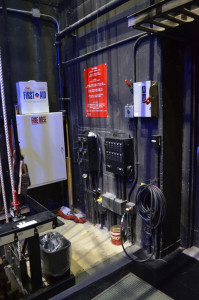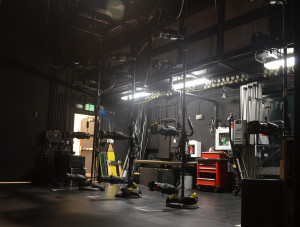Changes to Life Safety Code – Standpipes on Stage

It’s often difficult to fit in a hose cabinet backstage. Life Safety Code (2018) no longer includes the requirement on stages. Photo by Paul Sanow ASTC.
First, this may have made some sense where and when a theatre is professionally staffed by full time, trained theatre technicians. It was not logical for the now predominant school, university, and community theatre stages operated by students, faculty, volunteers, and theatre enthusiasts.
Second, societal changes have diminished the emphasis on protecting property over people not trained and paid to protect property; those occupants should focus only on egress. Other changes in building and fire codes should assure prompt and early notification of occupants and reasonably safe egress. They won’t need to suppress fire along the way.It’s important to recognize that more than a few local authorities had on their own initiative required stand pipes not be installed or at least the hose be omitted. In some cases, they had in fact required removal of hoses on existing stages.
Supporting that these were never intended for fire service use, fire fighters would generally not depend on a hose they do not maintain themselves in a life or death situation. Further, they would not connect to a stand pipe in the fire compartment – the stage. In high rises (another occupancy requiring stand pipes) they are required to be within the stair tower, separated from the building by a 2 or 3-hour fire resistance rated construction, not within the floor where they are likely to be fighting fire.
This change only affects the Life Safety Code for 2018, where adopted. This is long overdue and hopefully other codes and standards will also revisit and ultimately delete this requirement.
By William R. Conner, FASTC



